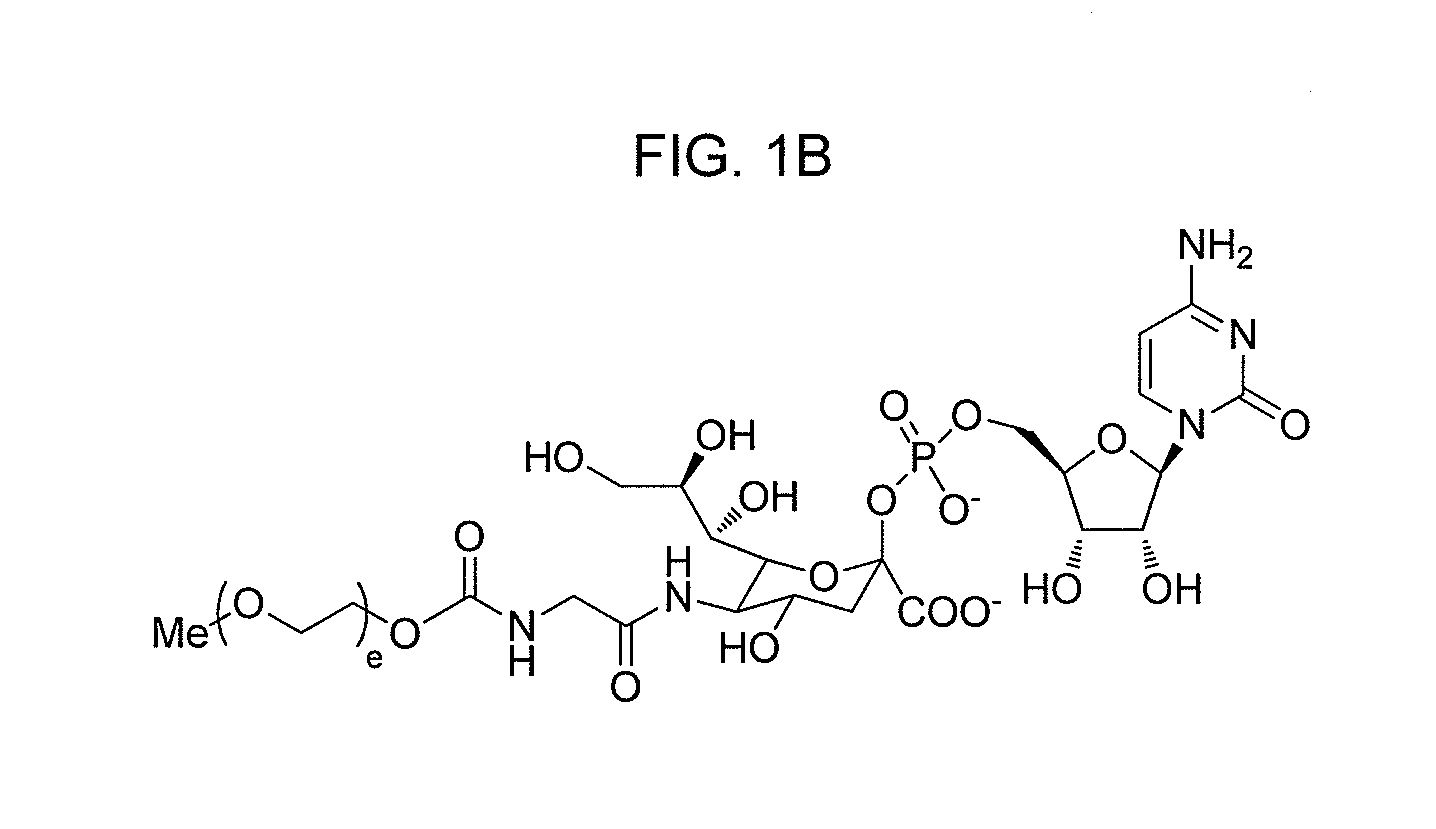One pot desialylation and glycopegylation of therapeutic peptides
a technology of desialylation and glycopegylation, which is applied in the direction of peptide/protein ingredients, enzyme stabilisation, enzymology, etc., can solve the problems of inability to homogenise the final product, and the possibility of reducing the biological or enzymatic activity of the peptide, and achieves cost-effective effects
- Summary
- Abstract
- Description
- Claims
- Application Information
AI Technical Summary
Benefits of technology
Problems solved by technology
Method used
Image
Examples
example 1
Purification of PEGylated Factor VIIa
[0470]GlycoPEGylated samples of Factor VIIa were purified with a modified anion-exchange method. Samples were handled at 5° C. Immediately before loading the column, 1 g Chelex 100 (BioRad) per 10 mL Factor VIIa solution was added to the remodeled sample. After stirring for 10 min, the suspension was filtered on a cellulose acetate membrane (0.2 μm) with a vacuum system. The retained chelator resin on the filter was washed once with 1-2 mL water per 10 mL bulk. The conductivity of the filtrate was adjusted to 10 mS / cm at 5° C., and adjusted to pH 8.6, if necessary.
[0471]Anion exchange was performed at 8-10° C. A column containing Q Sepharose FF was prepared before loading by washing with 1 M NaOH (10 column volumes), water (5 column volumes), 2 M NaCl, 50 mM HOAc, pH 3 (10 column volumes), and equilibrating with 175 mM NaCl, 10 mM glycylglycine, pH 8.6 (10 column volumes). For each PEGylation reaction, 15-20 mg Factor VIIa was loaded on to an XK1...
example 2
Determination of PEGylated Isoforms by Reversed phase HPLC analysis
[0475]PEGylated Factor VIIa was analyzed by HPLC on a reversed-phase column (Zorbax 300SB-C3, 5 μm particle size, 2.1×150 mm). The eluants were A) 0.1 TFA in water and B) 0.09% TFA in acetonitrile. Detection was at 214 nm. The gradient, flow rate, and column temperature depended on the PEG length (40 KDa, 20 KDa, and 10 KDa PEG: 35-65% B in 30 min, 0.5 mL / min, 45° C.; 10 KDa PEG: 35-60% B in 30 min, 0.5 mL / min, 45° C.; 5 KDa: 40-50% B in 40 min, 0.5 mL / min, 45° C.; 2 KDa: 38-43% B in 67 min, 0.6 mL / min, 55° C.). The identity of each peak was assigned based on two or more of four different pieces of evidence: the known retention time of native Factor VIIa, the SDS-PAGE migration of the isolated peak, the MALDI-TOF mass spectrum of the isolated peak, and the orderly progression of the retention time of each peak with increasing number of attached PEG.
example 3
Determination of Site of PEG Attachment by Reversed-Phase HPLC
[0476]Factor VIIa and PEGylated Factor VIIa variants were reduced by mixing sample (10 μL at a concentration of 1 mg / mL) with reducing buffer (40 μL, 50 mM NaCl, 10 mM glycylglycine, 15 mM EDTA, 8 M urea, 20 mM DTT, pH 8.6) for 15 min at room temperature. Water (50 μL) was added and the sample cooled to 4° C. until injected on the HPLC (<12 hrs). The HPLC column, eluants, and detection were as described above for non-reduced samples. The flow rate was 0.5 mL / min and the gradient was 30-55% B in 90 min, followed by a brief wash cycle up to 90% B. The identity of each peak was assigned as described in Example 2.
PUM
| Property | Measurement | Unit |
|---|---|---|
| time | aaaaa | aaaaa |
| time | aaaaa | aaaaa |
| time | aaaaa | aaaaa |
Abstract
Description
Claims
Application Information
 Login to View More
Login to View More - R&D
- Intellectual Property
- Life Sciences
- Materials
- Tech Scout
- Unparalleled Data Quality
- Higher Quality Content
- 60% Fewer Hallucinations
Browse by: Latest US Patents, China's latest patents, Technical Efficacy Thesaurus, Application Domain, Technology Topic, Popular Technical Reports.
© 2025 PatSnap. All rights reserved.Legal|Privacy policy|Modern Slavery Act Transparency Statement|Sitemap|About US| Contact US: help@patsnap.com



